Information about anal sphincter exercises
When done correctly anal sphincter exercises can strengthen the anal sphincter muscles to help you to control and hold both wind and stool in the back passage, therefore reducing leakage.
Where are these muscles?
The back passage, or anus, has two rings of muscle around it (see below).
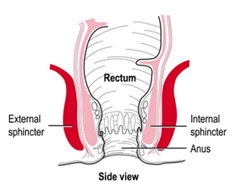
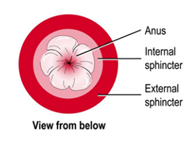
The inner ring is the internal sphincter, an involuntary muscle, which should be closed at all times, except when you are actually opening your bowels. This is normally automatic; you don’t have to think about doing it and you cannot control it voluntarily.
The outer ring of muscle is the external sphincter, which is a voluntary muscle which you can tighten up to close it more firmly if you have urgency or diarrhoea. Both muscles wrap all around the anus.
Either or both of these sphincter muscles can become weak.
This may be due to childbirth, constipation and straining or general wear and tear. Sometimes there is no obvious reason why. If you have weak muscles you may leak wind, liquid or solid stools from your bowel.
When you pass a stool, there is usually some residue from the stool left behind in the anal canal (see diagram).
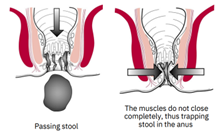
Normally, the sphincter muscles “snap shut” after you have finished opening your bowels to close off the back passage. This squeezes out any residue. You can then wipe clean and there is no further leakage.
If the muscles are damaged or weak, they may not close immediately or completely after you have been to the toilet. This often makes it difficult to wipe clean, and you may find that you leak for a while after opening your bowels. This may be a small or a large amount and may last only a few minutes, or several hours.
You may also find that you leak during strenuous exercise, lifting heavy weights or when you walk any distance. Some people find that a small amount of a stool is passed with wind.
Other people with weak muscles have a “funnel-shaped anus”.
The weak muscle does not close completely at skin level and stool is trapped inside the anal opening. This cannot be removed easily just by wiping (see diagram)
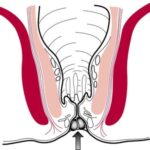
How can exercises help?
The internal sphincter, which is most often the problem of underlying leakage, cannot be strengthened by exercises. It is an involuntary muscle, which you cannot work just by willpower.
It is the external sphincter muscle that you can exercise to support internal muscle weakness.
The aim is to exercise this muscle enough to make it thicker and stronger so that it gives more support and may compress the internal muscle to prevent leakage. Speeding up the reaction of this muscle may also help with wind control.
Like any other muscle in the body, the more you use and exercise, the stronger the sphincter muscle will be. However, this will be hard work and often takes several months to be effective.
Learning to do the exercises
Points to remember
Points to remember
It is important that you learn to do to the exercises correctly, and to check from time to time that you are still doing them correctly. Your nurse will support your learning.
Use a position that is comfortable, sitting or lying with your knees slightly apart. Now imagine that you are trying to stop yourself passing wind from the bowel.
To do this you must squeeze the muscle around the back passage. Try squeezing and lifting that muscle as tightly as you can, you should be able to feel the muscle move. Your buttocks, tummy and legs should not move at all. You should not hold your breath when you are tightening the muscles!
You should be aware of the skin around the back passage tightening and being pulled up and away from your chair. You have now found your anal muscle.
Your nurse will help you develop your exercise programme. The aim is to do fast exercises to improve strength and slow exercises to help improve your endurance, for example, how long you can hold or squeeze the anal muscle.
Your exercise plan
Your exercise plan
Either sit or lie with your knees slightly apart (standing only following improvement).
Fast exercises (strength)
Tighten and then relax your muscles quickly as taught by your nurse.
Repeat as many times as your nurse has advised.
Slow exercises (endurance)
Tighten then hold your anal sphincter muscles as taught by your nurse. Hold tight for as long as your nurse advised.
Release the contraction and rest. Repeat as many times as your nurse has recommended.
| Review appointment adjustments to exercise programme | |||
| Slow | Fast | ||
| Hold | Rest | Repeat | Repeat |
Complete four to six sets every day, at regular intervals. It takes time for these exercises to make your muscle stronger. You may need to exercise regularly for several months before the muscles gain their full strength.
Tips to help you
Tips to help you
At first it is probably a good idea to set aside some time for these exercises to really concentrate on getting them right. But quite soon they should become easy to do wherever you are. Nobody need know what you are doing.
Get into the habit of doing your exercises with things you do regularly, every time you have a drink or every time you answer the phone if you are at the office, whatever you do often.


